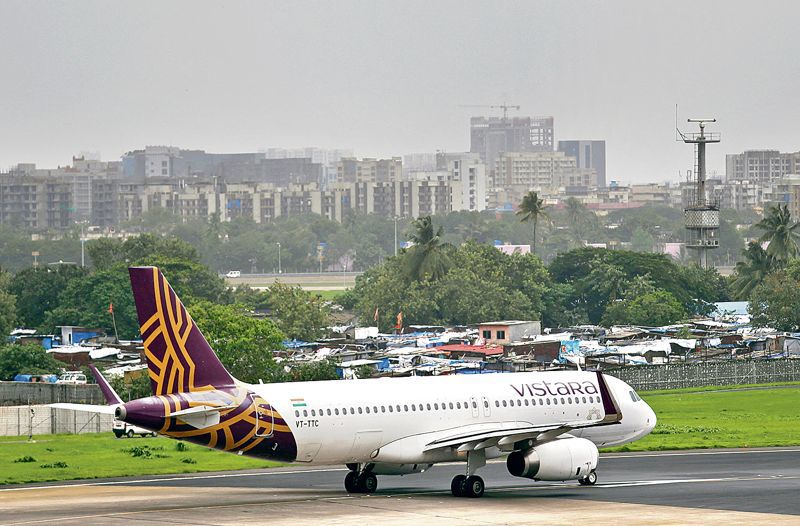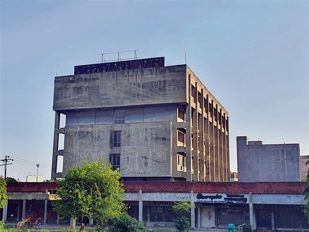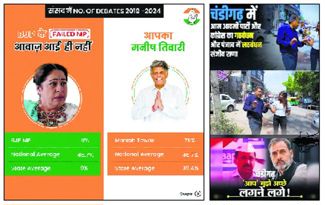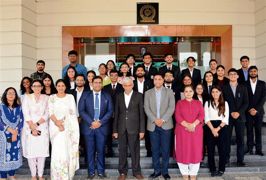
MERGER: One can only hope that the long-term goal is to retain Vistara as a full-service carrier within the Air India stable. Reuters
Sushma Ramachandran
Senior Financial Journalist
THE Indian aviation industry has been reviving rapidly after the Covid-19 pandemic, with the number of passengers rising exponentially over the past two years. The two major highlights of this recovery have been the privatisation of Air India and the enormous order for 970 aircraft placed by Indian carriers last year. It has not been a smooth flight path upwards, however, with several obstacles coming in the way. One such has been the recent pilots’ crisis hitting Vistara, the joint venture between the Tatas and Singapore Airlines. It has led to flight disruptions, with passengers scrambling to shift to other airlines. To add to air travellers’ worries, other carriers like Indigo are also cutting down on flights due to maintenance needs and the slow arrival of new planes. These developments come in the wake of the travails faced by budget airline GoFirst last year. It ultimately filed for insolvency after grounding half its fleet due to problems with Pratt and Whitney engines.
The financial health of the aviation sector is set to get better despite high prices of turbine fuel impacting profitability.
The Indian aviation sector has now virtually become a two-horse race, with Indigo commanding an enormous 60 per cent share and Air India following with 26 per cent. Players like SpiceJet and newly formed Akasa Air are way behind, with the latter’s launch muted due to leading promoter Rakesh Jhunjhunwala’s demise.
The upheavals in the domestic industry reflect the turmoil in global aviation, with Boeing’s top management roiled over safety issues. The company’s chief executive had to resign in January as a result of the door plug panel blowout on a 737 Max aircraft of Alaska Airlines. While an inquiry is underway, the company is grappling with continuing concerns over the safety of its aircraft due to earlier 737 Max crashes and some recent incidents. Air India and Akasa have placed orders for as many as 400 planes from the iconic aircraft manufacturer. Boeing’s woes are being examined closely as safety is undeniably the highest priority for commercial aircraft, with the lives of hundreds of passengers being at risk on every flight.
The situation is more complex for the Tatas, who are carrying out the colossal task of merging several Air India carriers into a single entity. Vistara, which is currently experiencing turbulence, has also been pulled into the Air India stable, but this may affect its niche status as the preferred carrier for business travellers. It had gained brownie points from the corporate sector by remaining a full-service airlines despite the huge demand for budget flights in the country. Employees are now having to shift to an altered set of wage scales and performance standards. The strategy has clearly not been a success so far. For the time being, Vistara is cutting back on flights to maintain the sanctity of its schedules, but a more viable long-term policy needs to be evolved if it is to remain a successful niche product.
The structural complexities of merging airlines were witnessed when two state-owned entities, Air India and Indian Airlines, were brought under a single umbrella in 2007. That particular decision did not turn out well. It was carried out under the stewardship of then Civil Aviation Minister Praful Patel, who was blamed for the subsequent creation of an unwieldy behemoth. It combined a healthy, profitable domestic company — Indian Airlines — with a struggling unprofitable international carrier. This led to innumerable difficulties in creating a single efficient and profit-making enterprise.
Comparisons are odious, however, and it would be unfair to consider the Air India-Vistara merger as being similar to the earlier one. The company management is already trying to be responsive to pilots’ complaints about roster issues. One can only hope that the long-term goal is to retain Vistara as a full-service carrier within the Air India stable as this would give a wider range of choices to consumers.
As for Indigo, the airline strides the Indian skies like a colossus. This is a worrying development for the civil aviation sector in general and for consumers in particular. The all-pervasive presence of an airline with a commanding market share has ensured that it is slowly moving away from the original concept of a budget airline. Additional charges are levied for seat selection, while food items on board are priced exorbitantly. Combined with seasonal spikes in air fares, as is happening right now, the extra charges mean it would be difficult to call it a ‘budget’ airline.
To add to the consumers’ woes, media reports abound of disabled passengers being treated shabbily by airlines — though this is not an issue confined to the market leader. It is also unfortunate that despite air fares being left to the discretion of the market forces, the Director General of Civil Aviation is forced to intervene so that passengers are treated in a humane manner. A case in point were the widely circulated photos of passengers having a bite to eat while sitting on the tarmac. The fact that airlines can treat consumers who are travelling by the most expensive mode of transport in this cavalier fashion can be traced directly to the near-monopolistic state of the industry today.
Consumers’ concerns come in the backdrop of the improving health of the domestic aviation industry. Air travel has bounced back from the doldrums of the pandemic, with 152 million passengers flying in 2023. This is a 23 per cent rise over the previous year and exceeds the count of 144.2 million passengers in 2019. The financial health of the sector is set to get better despite high prices of aviation turbine fuel impacting profitability. On the other hand, the government’s assurance of making air travel affordable for all has yet to become a reality, with the ambitious regional connectivity scheme expanding more slowly than originally anticipated. Similarly, the emergence of a near-monopoly is ensuring that even ‘budget’ airlines are far beyond the means of the average Indian traveller. The net result is that top airlines are thriving, but the needs of cost-sensitive consumers are being put on the back burner.
Join Whatsapp Channel of The Tribune for latest updates.



























